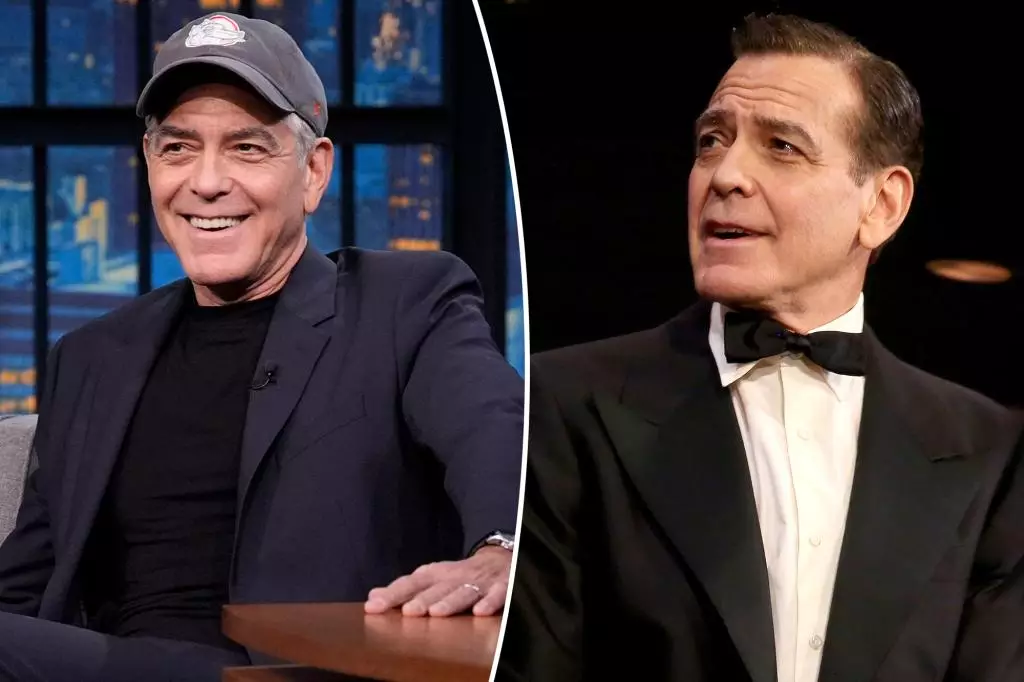In a world that often equates beauty and success with youthfulness, George Clooney stands out as a beacon of authenticity, tackling the nuances of aging with both humor and grace. During a recent appearance on “Late Night with Seth Meyers,” the 64-year-old actor quipped about his ongoing struggle with hair color, revealing a palpable longing for his signature gray locks. Rather than shy away from the realities of his look, Clooney expressed a willingness to shave his head entirely rather than show up to the prestigious Tony Awards donning a mismatched hair color. The context of this light-hearted admission reflects a deeper truth: the actor not only has professional standards but also personal aesthetics tied to his identity that he holds dear.
The Humorous Honesty of Aging
Clooney’s candid remarks about his hair situation underscore a broader societal issue regarding the perception of aging. He noted that his hair, caught in an awkward transition phase as he attempts to grow out the dye, resembles a “horrible midlife crisis,” a comment that resonated with many who have navigated similar transitions. Clooney’s self-deprecation—joking about his potential appearance as Yul Brynner, who famously embraced baldness—serves a dual purpose. On the one hand, it connects him to a lineage of great actors who have gone before him, but on the other hand, it highlights a rejection of societal norms that often dictates how older men should perceive themselves and their appearance.
While many might cringe at the idea of sporting an uneven hair color, Clooney’s frankness invites his audience to engage in a conversation about self-acceptance and the importance of owning one’s age. His humorous take on the harsh reality of growing older offers a refreshing perspective that is often lacking in Hollywood, where the fixation on perpetual youth can be overwhelming.
Family Perspective and Public Perception
Interestingly, Clooney’s family dynamics also play a crucial role in his decision-making. His wife, Amal, and their two children reportedly aren’t enamored with his temporary hair transformation, which he playfully acknowledges. This interplay between personal life and public image provides a fascinating glimpse into Clooney’s world, where professional accolades coexist with the lighthearted judgments of his loved ones. Amal, a respected human rights lawyer, represents a grounding force in Clooney’s life, and the couple’s interactions serve as a sweet reminder of the importance of family in an industry often infused with superficiality.
While he chuckles over his kids’ laughter at his new look, it’s clear that Clooney values their opinions deeply. His perspective reflects a concern not just for his public appearance but for how those close to him perceive his choices. In a culture that often champions complete independence in personal expression, Clooney embodies a nuanced understanding of relational dynamics, recognizing that authenticity does not mean disregarding the views of loved ones.
A Glorious Tribute Through Performance
Despite the temporary vanity concerns, Clooney’s venture into Broadway with “Good Night, and Good Luck” signifies a significant professional milestone worthy of celebration. Nominated for a Tony for his performance as Edward R. Murrow, it is evident that Clooney’s dedication to the craft is unwavering, transcending his cosmetic worries as he prepares for such a prestigious event. This juxtaposition of personal struggle with professional triumph adds depth to his public persona; he is not merely a Hollywood star concerned with image but a committed artist navigating the complexities of his career while embracing the realness of life.
The nominations for various aspects of the play—from sound design to lighting—suggest that Clooney’s role extends far beyond the confines of his character. He is a participant in a larger dialogue about the challenges and triumphs that come with aging, and he uses his platform to advocate for an alternative narrative about what it means to grow older. This commitment to authenticity shines not just through his performances but also through his willingness to address the often-unspoken trials of navigating midlife, resonating deeply with audiences who share similar journeys.

